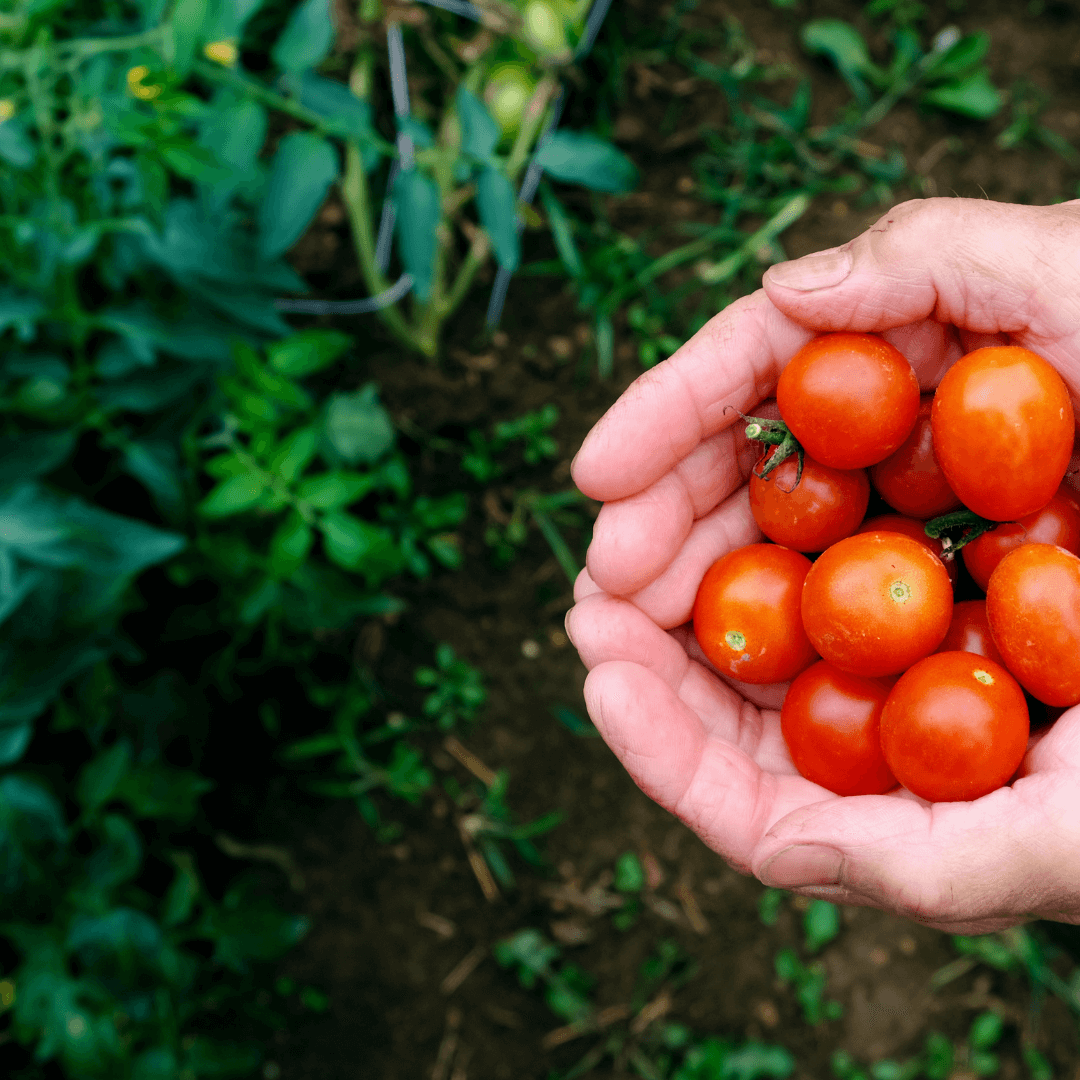Tiny Tim tomatoes, a miniature variety of cherry tomatoes, have gained significant attention and admiration in the culinary world. These petite wonders are cherished for their extraordinary taste, vibrant color, and versatility in various dishes. Not to be dramatic, but learning how to grow tiny time tomatoes from seed will change your life.
They are the epitome of perfection encapsulated in a tiny package. With their bite-sized allure and delectable flavor, Tiny Tim tomatoes have captured the hearts and palates of chefs and home cooks alike. Once you learn how to grow Tiny Tim tomatoes from seed, you'll grow them every year!
A Brief Overview of Tiny Tim Tomatoes
Tiny Tim tomatoes belong to the Solanum lycopersicum species and are classified as determinate plants. These compact tomato plants typically reach only 12 to 18 inches (30-45 centimeters), making them ideal for small gardens or container growing.
Their diminutive size doesn't compromise their fruit production capacity; on the contrary, Tiny Tims yield abundant grape-sized fruits that pack an intense sweet-tart flavor. One must acknowledge their immense popularity in the culinary world to discuss cherry tomatoes. Cherry tomatoes have become a staple due to their exceptional taste, vibrant color palette, and diverse culinary applications. Renowned chefs worldwide value cherry tomatoes for their ability to elevate both simple salads and complex gourmet creations with bursts of intense flavor and visual appeal.
- Days till maturity: Tiny Tim tomatoes typically reach maturity in about 60-65 days after planting.
- Planting depth: Seeds should be planted about 1/4 inch deep.
- Plant spacing: Space plants about 12-18 inches apart.
- Days to germination: Germination usually occurs within 5-10 days.
- Indoors or Direct Sown: Can be started indoors and transplanted or directly sown after the last frost.
- Full Sun or Partial Shade: Requires full sun for optimal growth.
- When to harvest: Harvest when tomatoes are bright red and firm, typically starting in late summer.
- How tall does the plant get? The plant usually grows to about 12-18 inches tall.
- How wide does the plant get? The plant spreads about 8-12 inches wide.
- Native: The specific origin of Tiny Tim tomatoes is not documented, but tomatoes, in general, are native to western South America.
- Family: Tiny Tim tomatoes belong to the Solanaceae or nightshade family.
$2.49
Tiny Tim Tomato Seeds – Heirloom, Non-GMO, Non-Hybrid, Open-Pollinated | Perfect for Containers and Small Spaces Grow your own delicious, bite-sized cherry tomatoes with our premium Tiny Tim Tomato Seeds! These heirloom, non-GMO, non-hybrid, and open-pollinated seeds produce a compact,… read moreTiny Tim Tomato Seeds
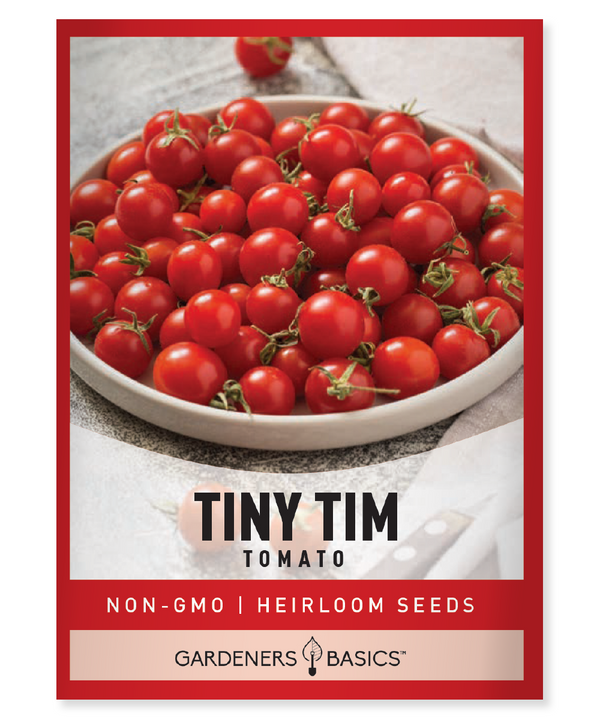
The Importance and Popularity of Cherry Tomatoes in the Culinary World
The rise of cherry tomatoes as a culinary darling can be attributed to several factors. First and foremost is their striking visual appeal. These petite orbs come in various colors ranging from fiery reds to golden yellows, deep purples and striped varieties that resemble little works of art.
This aesthetic quality adds brightness, texture, and vibrancy to any dish they grace. Furthermore, cherry tomatoes possess an exquisite balance between sweetness and acidity that is often lacking in larger tomato varieties.
This combination of flavors creates a delightful freshness, enhancing the overall taste profile of numerous recipes. Whether utilized in salads, salsas, pasta dishes, roasted vegetables, or as a simple snack, cherry tomatoes bring a dynamic element that can transform an ordinary dish into an extraordinary culinary experience.
The Origin of Tiny Tim Tomatoes
Historical background on cherry tomatoes
Cherry tomatoes have a rich and fascinating history that dates back centuries. Originating in South America, the ancient Aztecs and Incas first cultivated the wild ancestor of modern-day tomatoes.
These early civilizations appreciated the small, sweet fruits of the wild tomato plants and began selectively breeding them for desired traits. Over time, through trade routes and exploration, cherry tomatoes made their way to Europe and other parts of the world.
In Europe, cherry tomatoes gained popularity during the Renaissance as exotic fruits from the New World. They were prized for their vibrant colors, pleasant taste, and ornamental value.
Cultivating cherry tomatoes spread rapidly across regions with varying climates and growing conditions. This led to diverse varieties being developed over time.
Discovery and development of Tiny Tim variety
The Tiny Tim tomato variety was specifically bred to meet the demands of home gardeners seeking compact plants suitable for container gardening or small spaces. Developed in the mid-20th century by Dr. Calvin Lamborn at Northrup King Seed Company in Idaho, Tiny Tim quickly gained attention for its unique characteristics.
Dr. Lamborn meticulously selected parent plants with desirable traits such as dwarf growth habit, early maturity, high fruit yield, and exceptional flavor. Through a careful process of crossbreeding and selection over several generations, he successfully developed a stable line that consistently produced miniature-sized tomatoes on compact plants.
Influence of breeding techniques on tomato size
The development of Tiny Tim exemplifies how breeding techniques can influence tomato size. Traditional breeding methods focused on selecting plants that exhibited smaller fruit sizes naturally occurring within wild or heirloom seed varieties. However, advancements in scientific understanding allowed breeders to further enhance these natural variations by employing techniques like controlled pollination or hybridization.
By selectively crossing tomatoes with smaller fruit sizes, breeders could narrow down desirable traits and gradually reduce the size of the resulting fruits. Breeding for size reduction also involved selecting compact plant architecture to ensure that the height and lateral spread of the plants were proportionate to their diminutive fruit.
Breeders could create varieties like Tiny Tim that accommodate limited growing spaces without sacrificing yield or taste. The development of Tiny Tim showcases plant breeders' remarkable skill and dedication in harnessing nature's diversity and shaping it to meet specific needs.
Characteristics and Growing Conditions
Description of Tiny Tim Tomato Plant
When it comes to the Tiny Tim tomato plant, one must recognize its compact size and bushy growth habit. This variety of tomatoes is perfect for small spaces, making it an excellent choice for container gardening or urban gardens with limited room.
The Tiny Tim plant typically reaches a height of about 12-18 inches (30-45 cm) and spreads out in a dense, rounded manner. Its compact nature makes it easy to manage and maintain, especially for gardeners with limited mobility or those who prefer smaller plants.
$15.95
8 Tomato Seeds Variety Pack – Heirloom, Non-Hybrid, Open-Pollinated, Non-GMO – Perfect for Home Gardens! Unlock the secrets to a thriving tomato garden with our premium 8 Tomato Seeds Variety Pack! Carefully curated for tomato lovers and gardening enthusiasts alike, this… read moreTomato Seed Assortment | 8 Variety Pack
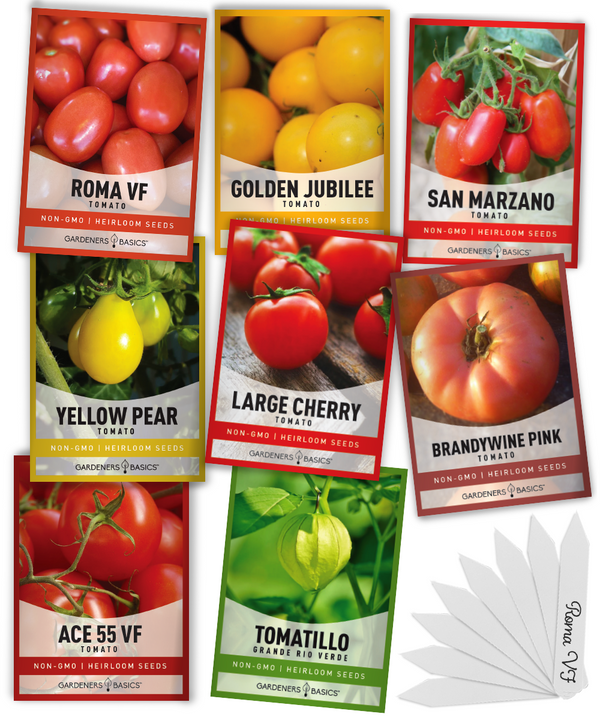
Compact Size:
The petite stature of the Tiny Tim tomato plant makes it aesthetically pleasing and contributes to its overall productivity. Since the plant's energy is focused on fewer fruits rather than excessive foliage, you can expect a robust yield of delicious cherry tomatoes. The compact size also aids in conserving space in your garden or balcony while enjoying fresh homegrown tomatoes.
Bushy Growth Habit:
The bushy growth habit is another notable Tiny Tim tomato plant characteristic. It develops dense foliage composed of abundant dark green leaves that provide shade and protection to the developing fruits against excessive sunlight. This feature also contributes to better moisture retention in the soil surrounding the roots, reducing water evaporation and improving overall water efficiency.
Leaf Structure and Fruit Production Capacity
Tiny Tim tomatoes showcase an attractive leaf structure, enhancing their visual appeal. The leaves are medium-sized with a slightly serrated edge, lending them an elegant appearance amidst vibrant green foliage.
These leaves play a crucial role in photosynthesis, harnessing sunlight to convert carbon dioxide into essential nutrients. As for fruit production capacity, despite being small plants themselves, Tiny Tims are known for their remarkable ability to bear an abundance of cherry tomatoes.
When fully ripe, the tomato fruits are typically round, firm, and beautifully red. Each plant can produce many delectable fruits, providing ample harvest to enjoy fresh salads, salsas, or delightful snacks.
Optimal Growing Conditions for Tiny Tim Tomatoes
To ensure Tiny Tim tomatoes' successful growth and bountiful harvest, they must be provided with optimal growing conditions. Paying attention to their sunlight requirements, soil composition, pH levels, drainage needs, and temperature tolerance will go a long way in promoting healthy plant growth and maximizing fruit production.
Sunlight Requirements:
Tiny Tim tomatoes thrive in total sun exposure. They require a minimum of 6-8 hours of direct sunlight each day to flourish and develop robustly. Selecting a location that receives ample sunshine throughout the growing season is crucial for optimal fruit ripening and flavor development.
Ideal Soil Composition, pH Levels, and Drainage Needs:
These compact tomato plants thrive in well-draining soil with good moisture retention capabilities. The ideal soil composition for Tiny Tims consists of a loamy or sandy mix with adequate organic matter content. A slightly acidic soil pH between 6.0 and 6.8 benefits nutrient absorption by the plant's roots.
Drainage is crucial for preventing root rot or other water-related issues. Amending the soil with organic matter such as compost or well-rotted manure can help improve the plants' drainage and nutrient availability.
Temperature Tolerance Range:
Tiny Tim tomatoes are relatively tolerant of various temperatures but prefer warm weather to thrive. These plants grow optimally when temperatures range between 70-80°F (21-27°C). Avoid exposing them to extreme heat or cold fluctuations as they may negatively impact fruit set, development, and overall plant health.
Cultivation Techniques for Tiny Tim Tomatoes
Starting from Seeds or Transplants
When growing Tiny Tim tomatoes, you can start from seeds or transplant established seedlings. Starting from seeds gives you full control over the growth process from germination while transplanting saves time and effort.
If you choose to start from seeds, select high-quality tomatoes from a reliable source. Before sowing, soaking the seeds in warm water for about 12-24 hours is recommended, which can help speed up germination.
Germination Process and Seedling Care
To initiate germination, sow the soaked Tiny Tim tomato seeds in a seed tray or individual containers filled with a well-draining potting mix. Keep the soil consistently moist, but avoid overwatering as it can lead to damping-off disease.
Place the tray/container in a warm location where temperatures range between 70-80°F (21-27°C). Covering the tray with a plastic dome or wrap can create a humid environment that aids germination.
Once the seedlings emerge and develop their first set of true leaves, they require proper care for healthy growth. Providing ample light is crucial at this stage; therefore, place them under grow lights or in abundant natural sunlight.
During this phase, maintain a temperature range of 60-70°F (15-21°C). Regularly monitor soil moisture levels and water gently when necessary, ensuring that it does not to oversaturate.
Transplanting Guidelines for Successful Growth
When your Tiny Tim tomato seedlings reach about 6-8 weeks old and have developed sturdy stems and several sets of leaves, they are ready for transplantation into larger containers or outdoor beds. Harden off the seedlings gradually by exposing them to outdoor conditions for a few hours each day, increasing the duration over a week. Choose a planting site with at least 6-8 hours of direct sunlight daily and well-drained soil.
Dig holes deep enough to cover the stem up to the first set of leaves, as tomatoes can develop roots along the buried part of their stems. Gently remove the seedlings from their containers and place them in the prepared holes, ensuring they are planted at the same depth as in their previous containers.
Backfill with soil, firm gently around the base of each plant, and water thoroughly. Maintain a distance of approximately 2 feet (60 cm) between plants when transplanting multiple Tiny Tim seedlings.
$19.95
The Ultimate Tomato Seed Variety Set - 16 Heirloom, Non-GMO Tomato Varieties for Your Home Garden Introducing our 16 Tomato Seeds Variety Pack, a must-have collection for any gardening enthusiast or professional grower! This premium seed assortment includes a diverse selection… read moreHeirloom Tomato Seeds for Planting | 16 Variety Pack
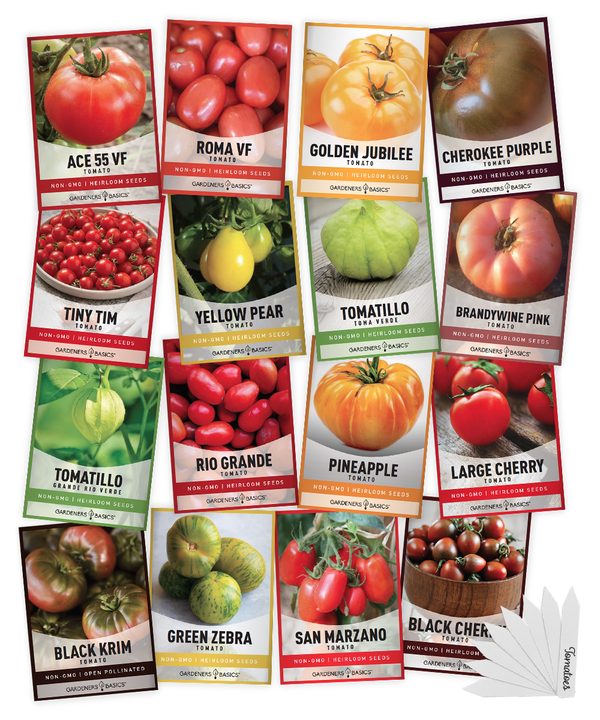
Care Tips During The Growing Season
Proper care during the growing season is crucial for maximizing Tiny Tim tomato plant health and productivity. One important aspect is maintaining appropriate watering frequency and methods to prevent overwatering and underwatering.
It's essential to keep the soil consistently moist but not waterlogged or excessively dry. A general guideline is to water deeply once or twice a week, ensuring that moisture reaches at least 6 inches (15 cm) below the soil surface.
Various support systems can be employed based on your preference and available resources to ensure proper plant support as Tiny Tim tomatoes grow. Staking techniques involve using wooden or metal stakes securely placed near each plant's base to provide vertical support as they grow taller.
Alternatively, tomato cages made from wire mesh or stakes interconnected with horizontal wire rings can enclose individual plants effectively while allowing air circulation. Another option is trellising methods, which use strings or netting attached between sturdy posts or overhead structures like pergolas.
This approach allows for vertical growth while distributing weight evenly across supporting structures and facilitating easy access for maintenance tasks like harvesting or pruning. Pruning practices play an essential role in enhancing Tiny Tim tomato plant productivity.
Removing suckers, which are side shoots that develop in the junctions between the main stem and branches, helps promote better airflow and prevents overcrowding. By redirecting energy to fruit production, removing these suckers can improve overall yield.
Additionally, trimming excess foliage can optimize light penetration into the plant canopy, facilitating healthier growth and ripening of fruits. Remember to prune with clean and sharp tools to minimize damage or transmission of diseases.
Aim for a balanced approach by finding the right balance between allowing adequate foliage for photosynthesis while maintaining good airflow and light exposure within the plant. By following these cultivation techniques for Tiny Tim tomatoes, starting from seeds or transplants, mastering germination processes, transplanting guidelines, care tips during the growing season, including watering practices and support systems selection like staking or trellising methods as well as implementing pruning practices such as removing suckers and trimming excess foliage—your journey towards successfully cultivating this delightful cherry tomato variety will be one filled with fruitful harvests.
Tiny Tim Tomato Care: Pests, Diseases, and Challenges
Common pests that affect Tiny Tim tomatoes
Like other plants, Tiny Tim tomatoes are susceptible to various pests that can hinder their growth and productivity. Among the most common pests that affect these delightful cherry tomatoes are aphids, whiteflies, and spider mites. Aphids are tiny insects known for their ability to suck sap from plant tissues, causing stunted growth and deformation of leaves.Whiteflies are small flying insects that feed on the undersides of leaves, weakening the plant and transmitting diseases. Spider mites are minuscule arachnids that thrive in dry conditions and create tiny webs on plant surfaces while sucking nutrients from the leaves.
Preventive measures like
Implementing preventive measures to protect your Tiny Tim tomato plants from the pests above and ensure a healthy harvest is essential. One practical approach is regular monitoring of your plants for signs of infestation.
Early detection allows for prompt intervention before pest populations escalate. Additionally, practicing good garden hygiene by removing weeds or debris around your tomato plants eliminates hiding places for pests.
To deter aphids specifically, you can introduce beneficial insects such as ladybugs or lacewings to your garden as natural predators. These beneficial insects feast on aphids and help control their population naturally.
In case of heavy infestations, spraying a diluted mixture of neem oil or insecticidal soap can provide effective control without harming beneficial insects. When combating whiteflies and spider mites on your Tiny Tim tomatoes, using yellow sticky traps or applying reflective mulch around the base of your plants can help deter these pests.
These traps attract adult whiteflies towards them while inhibiting their ability to reach the plant leaves. Additionally, maintaining appropriate humidity levels through regular misting can discourage spider mite populations, as they thrive in dry conditions.
Conclusion How To Grow Tiny Tim Tomatoes From Seed
While Tiny Tim tomatoes bring joy to many gardeners, caring for them also involves tackling potential pests, diseases, and challenges. By staying vigilant and implementing preventive measures such as regular monitoring, practicing good garden hygiene, and introducing beneficial insects, you can minimize the impact of common pests like aphids, whiteflies, and spider mites on your cherished plants.
Remember that maintaining a healthy environment through proper watering, adequate sunlight exposure, and well-drained soil also plays a vital role in preventing diseases and ensuring the overall well-being of your Tiny Tim tomatoes. Embrace the journey of nurturing these delightful cherry tomatoes and relish the fruitful rewards of your efforts in culinary creations that amaze both your taste buds and those you share them with.
$9.95
Grow Unique Tomatoes: 5 Rare Tomato Seeds Collection for Your Garden Introducing our 5 Rare Tomato Seeds Variety Pack, a must-have for every tomato lover and avid gardener! This premium collection features a curated selection of rare heirloom tomato seeds to… read moreRare Tomato Seeds | 5 Variety Pack
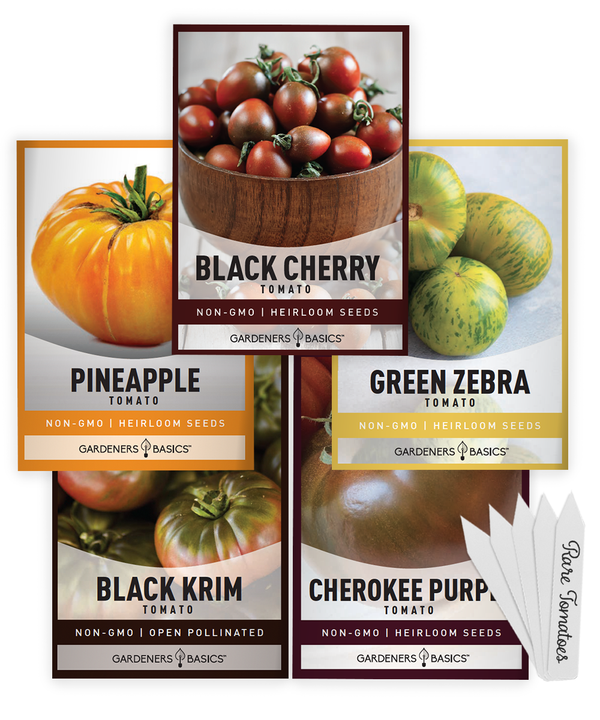
FAQ - How To Grow Tiny Tim Tomatoes From Seed.
1. What are Tiny Tim tomatoes?
Answer: Tiny Tim tomatoes are a dwarf variety of cherry tomatoes, known for their compact size, making them ideal for container gardening and small spaces. They produce small, red, flavorful fruits.
2. How big do Tiny Tim plants grow?
Answer: Tiny Tim tomato plants typically grow to about 12-18 inches tall, making them perfect for windowsills, balconies, and patios.
3. How much sunlight do they need?
Answer: Tiny Tim tomatoes require full sunlight, ideally 6-8 hours daily, for optimal growth and fruit production.
4. What type of soil is best for Tiny Tim tomatoes?
Answer: They thrive in well-draining, nutrient-rich soil with a slightly acidic to neutral pH.
5. When should I plant Tiny Tim tomatoes?
Answer: Plant Tiny Tim tomatoes after the last frost date in your area, usually in late spring or early summer.
6. How often should I water Tiny Tim tomato plants?
Answer: Water them regularly to keep the soil moist but not waterlogged. Reduce watering once fruits begin to ripen.
7. Are Tiny Tim tomatoes resistant to any diseases?
Answer: While they are generally hardy, they can still be susceptible to common tomato diseases. Regular care and preventive measures can help keep them healthy.
8. How long does it take for Tiny Tim tomatoes to bear fruit?
Answer: Tiny Tim tomatoes typically start to bear fruit 60-65 days after planting.
9. Can I grow Tiny Tim tomatoes indoors?
Answer: Tiny Tim tomatoes can be grown indoors with sufficient light, but they may need additional support like grow lights.
10. What are the best uses for Tiny Tim tomatoes in cooking?
Answer: They are great in salads, as garnishes, or eaten fresh. Their sweet flavor also makes them a good choice for sauces and salsas.
$109.95
Ultimate Survival Seed Kit – 140 Variety Pack for Self-Sustaining Gardens, Long-Term Food Storage & FREE Ammo Can for Secure Storage Introducing the Ultimate Survival Seed Kit — your all-in-one solution for sustainable gardening, survival prepping, and self-sufficient living! This… read moreUltimate Survival Seed Kit: 140 Varieties for Self-Sufficient Gardens & Food Storage
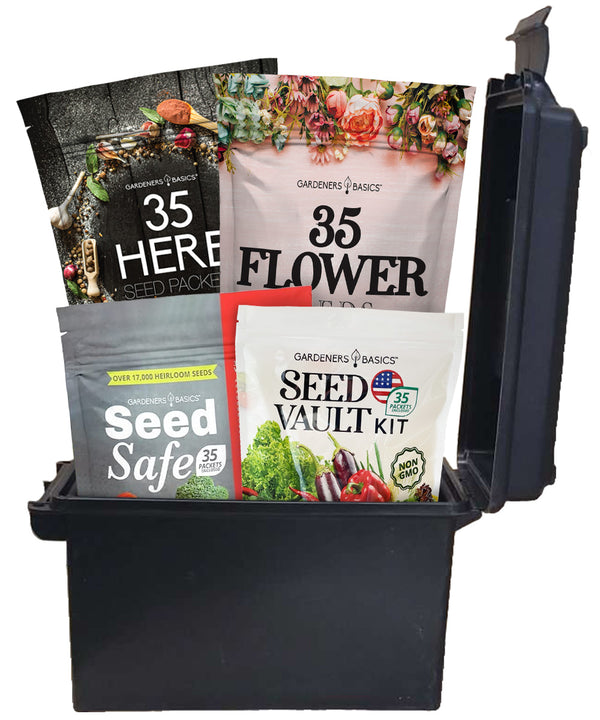
$199.95



